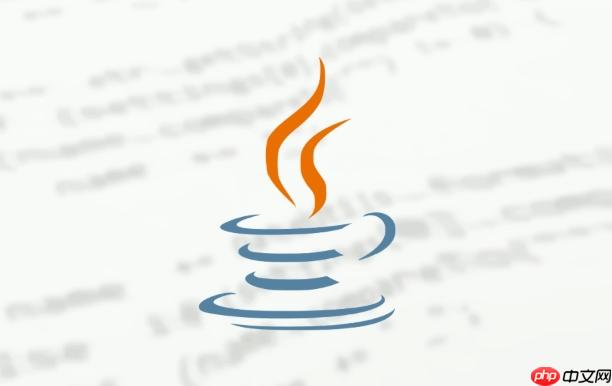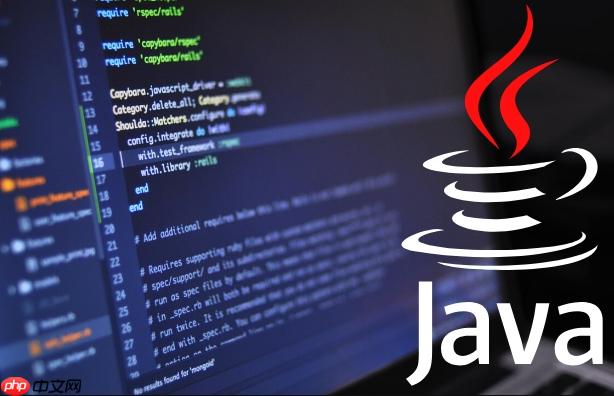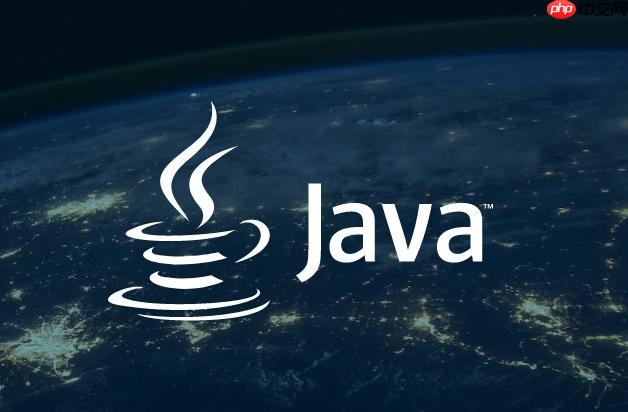java中实现post请求的核心步骤包括:1.使用httpurlconnection类;2.设置请求方法为post;3.配置请求头;4.通过outputstream发送数据。代码示例展示了如何使用httpurlconnection发送post请求,包括构建请求体和处理响应。此外,使用apache httpclient等第三方库可简化开发流程,适用于复杂场景如文件上传。文件上传需构造multipart/form-data格式的请求体,并正确设置content-type。常见错误包括url格式错误、网络问题、请求方法配置错误等,可通过抓包工具、日志打印等方式调试。当需发送大量数据或敏感信息时应优先使用post请求。

Java中实现POST请求,核心在于使用java.net.HttpURLConnection类,构建请求头,设置请求方法,并向服务器发送数据。其实也没那么复杂,掌握几个关键步骤就行。

import java.io.OutputStream;
import java.net.HttpURLConnection;
import java.net.URL;
import java.nio.charset.StandardCharsets;
public class PostRequestExample {
public static void main(String[] args) throws Exception {
String url = "https://example.com/api/endpoint"; // 替换为你的API端点
String postData = "param1=value1¶m2=value2"; // 替换为你的POST数据
URL obj = new URL(url);
HttpURLConnection con = (HttpURLConnection) obj.openConnection();
// 设置请求方法为POST
con.setRequestMethod("POST");
// 添加请求头
con.setRequestProperty("Content-Type", "application/x-www-form-urlencoded");
// 允许输出
con.setDoOutput(true);
// 发送POST数据
try (OutputStream os = con.getOutputStream()) {
byte[] input = postData.getBytes(StandardCharsets.UTF_8);
os.write(input, 0, input.length);
}
// 获取响应代码
int responseCode = con.getResponseCode();
System.out.println("Response Code : " + responseCode);
// 读取响应内容(可选)
// try (BufferedReader in = new BufferedReader(new InputStreamReader(con.getInputStream()))) {
// String inputLine;
// StringBuffer response = new StringBuffer();
//
// while ((inputLine = in.readLine()) != null) {
// response.append(inputLine);
// }
// in.close();
//
// System.out.println(response.toString());
// }
}
}代码里,HttpURLConnection是关键,设置请求方法、请求头,然后通过OutputStream发送数据。注意处理异常,并且别忘了关闭流。
使用HttpClient库简化POST请求?
立即学习“Java免费学习笔记(深入)”;

HttpClient库,比如Apache HttpClient或OkHttp,可以简化POST请求的编写。它们提供了更高级的API,能更好地处理连接池、重定向、身份验证等复杂场景。
import org.apache.http.client.methods.CloseableHttpResponse;
import org.apache.http.client.methods.HttpPost;
import org.apache.http.entity.StringEntity;
import org.apache.http.impl.client.CloseableHttpClient;
import org.apache.http.impl.client.HttpClients;
import org.apache.http.util.EntityUtils;
public class HttpClientPostExample {
public static void main(String[] args) throws Exception {
CloseableHttpClient httpClient = HttpClients.createDefault();
HttpPost httpPost = new HttpPost("https://example.com/api/endpoint"); // 替换为你的API端点
String json = "{\"param1\":\"value1\", \"param2\":\"value2\"}"; // 替换为你的JSON数据
StringEntity entity = new StringEntity(json);
httpPost.setEntity(entity);
httpPost.setHeader("Accept", "application/json");
httpPost.setHeader("Content-type", "application/json");
CloseableHttpResponse response = httpClient.execute(httpPost);
try {
System.out.println(response.getStatusLine());
String responseBody = EntityUtils.toString(response.getEntity());
System.out.println(responseBody);
} finally {
response.close();
}
}
}这段代码使用了Apache HttpClient,构建了一个HttpPost对象,设置了请求体和请求头,然后执行请求并处理响应。 记得引入相应的依赖。

如何处理POST请求中的文件上传?
文件上传通常需要设置Content-Type为multipart/form-data,并且构造包含文件数据的请求体。这比简单的键值对POST请求要复杂一些。
import java.io.File;
import java.io.FileInputStream;
import java.io.IOException;
import java.io.OutputStream;
import java.net.HttpURLConnection;
import java.net.URL;
import java.nio.charset.StandardCharsets;
public class FileUploadExample {
public static void main(String[] args) throws IOException {
String url = "https://example.com/api/upload"; // 替换为你的API端点
File uploadFile = new File("path/to/your/file.txt"); // 替换为你的文件路径
String boundary = "===" + System.currentTimeMillis() + "===";
URL obj = new URL(url);
HttpURLConnection con = (HttpURLConnection) obj.openConnection();
con.setRequestMethod("POST");
con.setRequestProperty("Content-Type", "multipart/form-data; boundary=" + boundary);
con.setDoOutput(true);
try (OutputStream outputStream = con.getOutputStream()) {
// 添加文件参数
outputStream.write(("--" + boundary + "\r\n").getBytes(StandardCharsets.UTF_8));
outputStream.write(("Content-Disposition: form-data; name=\"file\"; filename=\"" + uploadFile.getName() + "\"\r\n").getBytes(StandardCharsets.UTF_8));
outputStream.write(("Content-Type: text/plain\r\n").getBytes(StandardCharsets.UTF_8)); // 根据文件类型修改
outputStream.write(("\r\n").getBytes(StandardCharsets.UTF_8));
// 写入文件内容
FileInputStream fileInputStream = new FileInputStream(uploadFile);
byte[] buffer = new byte[4096];
int bytesRead;
while ((bytesRead = fileInputStream.read(buffer)) != -1) {
outputStream.write(buffer, 0, bytesRead);
}
fileInputStream.close();
outputStream.write(("\r\n").getBytes(StandardCharsets.UTF_8));
outputStream.write(("--" + boundary + "--\r\n").getBytes(StandardCharsets.UTF_8));
}
int responseCode = con.getResponseCode();
System.out.println("Response Code : " + responseCode);
}
}这段代码演示了如何使用HttpURLConnection上传文件。关键在于设置正确的Content-Type和构造符合multipart/form-data格式的请求体。
POST请求中的常见错误和调试技巧?
常见的错误包括:
MalformedURLException: URL格式错误。IOException: 网络连接问题。ProtocolException: 请求方法设置错误。调试技巧:
什么时候应该使用POST请求而不是GET请求?
简单来说,当需要发送数据给服务器,并且数据量较大或者包含敏感信息时,应该使用POST请求。GET请求通常用于获取资源,并且数据会附加在URL上,不适合发送大量数据或敏感信息。POST请求将数据放在请求体中,更安全也更适合发送复杂数据。
以上就是如何在Java中实现POST请求 Java构造POST请求的方式的详细内容,更多请关注php中文网其它相关文章!

每个人都需要一台速度更快、更稳定的 PC。随着时间的推移,垃圾文件、旧注册表数据和不必要的后台进程会占用资源并降低性能。幸运的是,许多工具可以让 Windows 保持平稳运行。

Copyright 2014-2025 https://www.php.cn/ All Rights Reserved | php.cn | 湘ICP备2023035733号